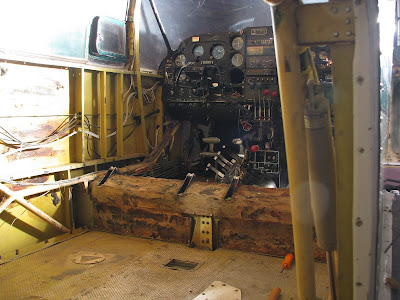
Few things can excite an argument / debate in a hangar bull session like mention of "the step". For those of you that do not know this is a phenomenon in which an airfoil seems to be mysteriously capable of flying faster if you climb past your target altitude then start a shallow descent back to where you want to be. Unfortunately, this little bit of aerodynamic knowledge has been relegated to "myth" status in recent decades. Nay-sayer's claim that it is impossible. "Prove it on a drag curve" they say. "Show me in the plane" they say. And chances are, I can not. Let me pick the plane, time, weight and altitude however, And I'll prove it. "Kids these days" call what they do not understand and cannot reproduce with their fancy modern planes a "myth" perpetuated by the older, less enlightened generations who simply must not have understood flight, because it was so new. Or some crap like that... They knew, knew better than we in fact. Those wise old pelicans knew, and as new technology designed out characteristics that were once commonplace, the Kids forgot. Because they did not need to know. But knowing what an airfoil does and why, even if you do not need to is the path to aeronautical enlightenment. This rant brought to you courtesy of a thread on the AOPA forums. It was amusing to note that the "myth" crowd were mostly flying newer Cherokees, Mooneys or composite planes with sleek laminar flow wings. The ones who Knew, however were flying or had flown those wings to which this curiosity applies, The Cessna 195's, Bonanzas and so on.
The thread was started by quoting Ernest Gann, in an excerpt from
Fate is the Hunter.
“We pass through ten thousand feet and for a moment steal an additional hundred feet so we can descend back through it. In the doing, the ship can be set flying in a slightly nose-down position. Thus, “on the step” we will add better than 10 knots to our air speed and also satisfy our sensual appreciation of flight. A mushing airplane, regardless of it’s speed, becomes a miserable contraption to any dedicated pilot. He absorbs this unhappiness through the seat of his pants. There is no reason to believe this will ever change, regardless of aircraft design. A good pilot becomes morose and irritable in spite of what most modern instruments proclaim unless his ship is “on the step”. He will work work endlessly to achieve that delicate angle and for this once and only once will prove the instruments wrong and hair tips of his sensory powers more honest. When the instruments finally admit additional speed, then the pilot is doubly content, for he has proof that the instruments are not his absolute master and he is not as yet altogether a mechanical man.”Here is my reply and explanation, edited for context.
"
Something to consider, the airfoils in use at the time of Gann. Most people today believe that the "step" is a myth, and as it applies to modern airfoils, it mostly is. As pointed out, it works in Bonanza's, and I can see and feel a difference in my Apache. I have also seen it demonstrated first hand from the third seat in a DC-6, by an old school Captain that probably would have gotten along fine with Gann... Those planes use airfoils dating from the 40's. More modern airfoils do not have the same drag properties, they are blessed with the ability to achieve efficient cruise flight without having to accelerate in a shallow dive first. The simple way to think of it is this, at angle of attack "A", the wing will generate the required lift at airspeed "1" with overall drag in equilibrium with thrust, thus no more acceleration. However, if we then lower the nose and reduce the angle of attack the first thing that happens is a loss of lift right? Lower AOA, same speed... You with me? That's the shallow dive. Now, something else starts to happen, at this lower AOA, induced drag goes down (old school fat wing remember?) and with gravity's help, the plane accelerates. More speed equals more lift, as well as more overall drag. The plane will shortly reach a new equilibrium and stop descending due to the increased lift which equals the previous ammount and is once again balanced with gravity. We are now at AOA "B" and airspeed "2" with the same lift and power we started with. One other reason this is so elusive is this: Notice I said nothing about raising the nose to level off again? The plane will stop descending on its own as the lift increases with airspeed. Thus the plane "picks" its own altitude. If you know your plane well enough you can end up at the desired altitude by knowing how far down she will go as she seeks balance, but otherwise it'll do whatever it wants. This is why its so easy to "fall off the step". As soon as you change something the plane will seek a new equilibrium point, maybe on the step, maybe not. Depends on what you did. Well, nuff said, flame away, but again, this does not work on all airfoil/airframes. Mostly on older, slow, fat high lift wings. (Bonanza guys, don't take that last part wrong...)
So find yourself a "Real Airplane" and go try it out. (I think I sense another hangar fight coming on...)









